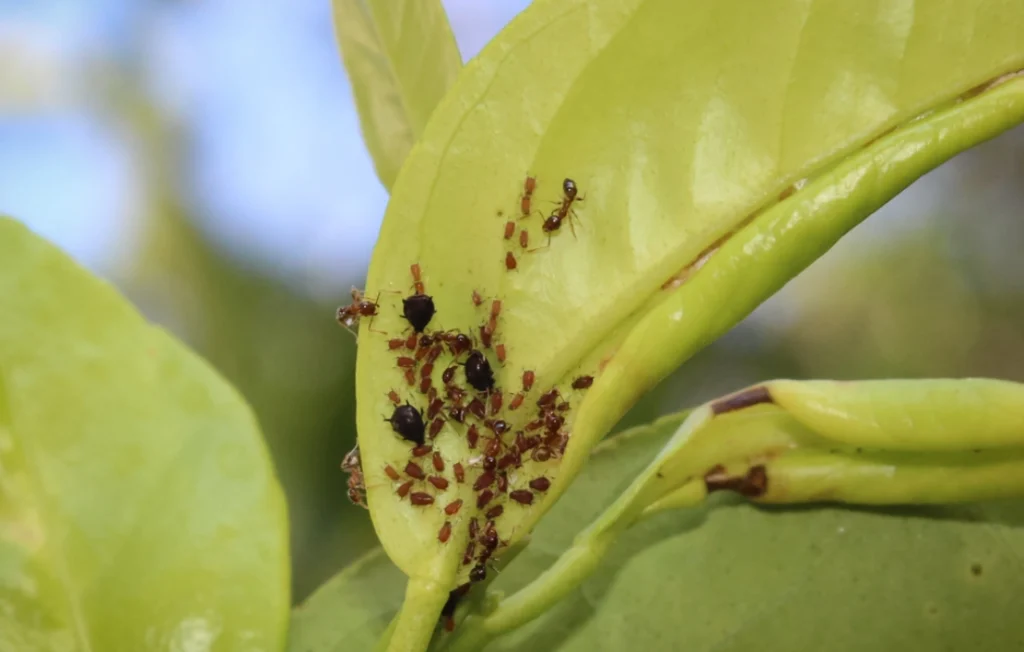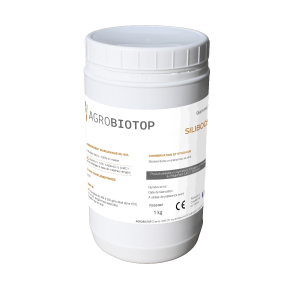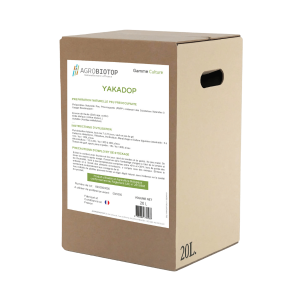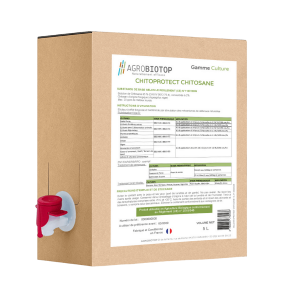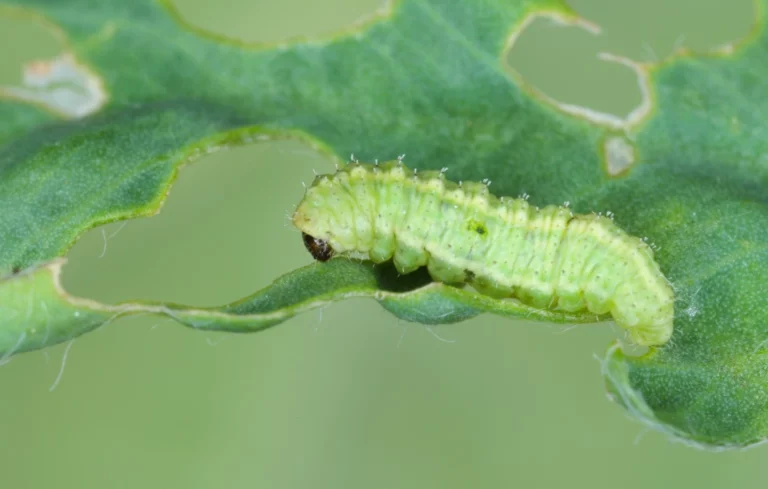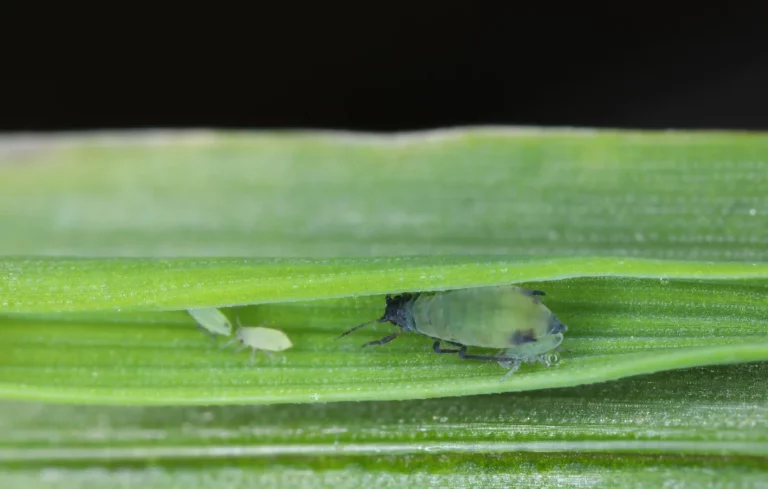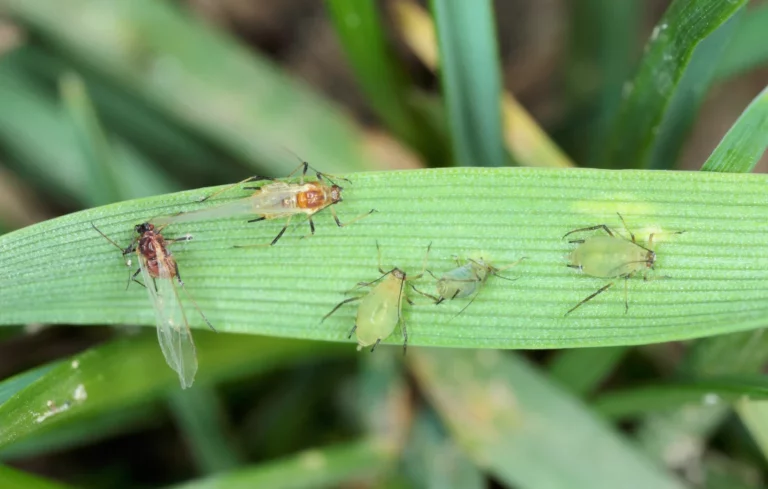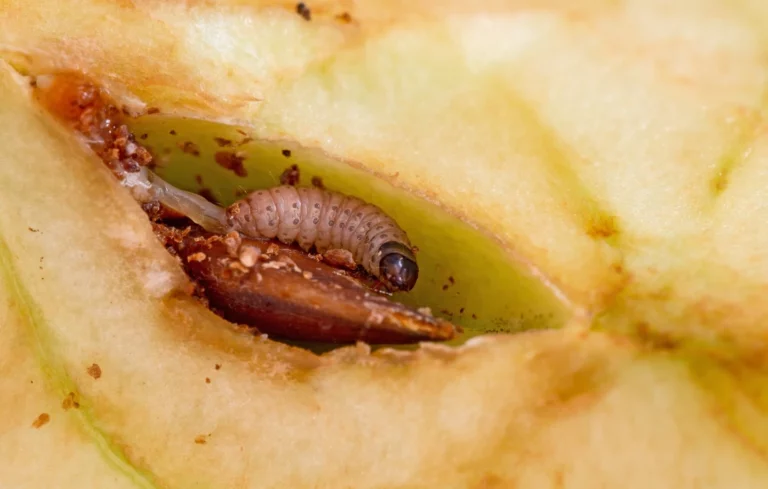The black citrus aphid (Toxoptera aurantii ) is a scourge for gardeners and farmers specializing in citrus cultivation. Its presence causes significant damage to citrus plantations. Let’s find out how to identify the damage caused by this aphid and how to combat it using effective biological solutions.
Presentation of Toxoptera aurantii
The black citrus aphid, scientifically known as Toxoptera aurantii , is a hemipteran insect of the Aphididae family.
It is commonly called the black orange aphid or brown citrus aphid and belongs to the genus Toxoptera.
Since its appearance in Asia, this insect has gradually invaded other continents, finding suitable climates in Guyana, Guadeloupe, Martinique, Reunion, and even in greenhouse crops in temperate regions.
Its ability to adapt to various environments makes it a formidable enemy for citrus producers. This pest is particularly active in humid and warm environments, conditions that accelerate its proliferation.
Description of the black citrus aphid
The black citrus aphid measures between 2 and 3 mm and has an oval and slightly flattened morphology. The color of adults varies between black and dark brown, while young individuals display a more orange tint. This insect has beige-colored legs, which allow it to move easily on the young shoots and leaves of citrus fruits.
Depending on living conditions, adults can be winged or apterous (wingless). In cases of overpopulation or lack of food resources, they develop wings, allowing them to colonize other areas to find new food sources.
Which plants are attacked?
The black citrus aphid is a polyphagous pest , which attacks several types of important tropical crops. Although it mainly favors citrus fruits, it can also infest other plants.
Here are the main species likely to be affected by this aphid:
- Citrus (genus Citrus): lime, mandarin, orange, and other varieties of citrus
- Tea trees ( Camellia sinensis )
- Coffee trees ( Coffea )
- Mango trees ( Mangifera indica )
- Cocoa trees ( Theobroma cacao )
Life cycle
The life cycle of the black citrus aphid is marked by a high speed of development and a strong reproductive capacity. The female can reproduce sexually or by parthenogenesis (reproduction without fertilization).
In autumn, females lay eggs, which will give rise to parthenogenetic generations in spring and summer.
Under optimal conditions, each female can produce up to fifty larvae, which she deposits on the underside of leaves and flower buds of host plants.
With a life cycle of about twenty days , this aphid can produce up to 30 generations per year , which promotes rapid population expansion.
What damage does the black citrus aphid cause?
The black citrus aphid causes considerable damage to infested plants. Its mode of nutrition and the substances it secretes lead to a progressive weakening of crops:
- Sap sucking : piercing-sucking insects, these aphids absorb the sap from leaves and young shoots, which weakens the plant.
- Deformation of shoots and flowers : The stings combined with the insect’s phytotoxic saliva cause visible malformations on new shoots and flowers, which slows the growth of the tree.
- Honeydew production and sooty mold development : Aphids secrete a sugary honeydew that promotes the appearance of sooty mold, a black layer resembling soot. This sooty mold clogs the leaves and limits photosynthesis.
An aphid vector of the Tristeza virus
The black citrus aphid is also a known vector of the Citrus Tristeza Virus (CTV) , a particularly destructive pathogen of citrus fruits. This virus, transmitted with great efficiency by the species Aphis citricidus, is responsible for major losses in orchards, causing widespread dieback of infected trees.
The symptoms are multiple: the tree gradually weakens, the leaves fall en masse, and the fruits become small, deformed and of poor quality. Plants grafted onto bitter orange trees, particularly sensitive to the virus, quickly die, jeopardizing the entire production.
The presence of this virus therefore represents a serious threat to citrus crops, impacting both the health of the trees and the quality of the harvests.
What methods are there to combat the black citrus aphid?
To combat the black citrus aphid, it is recommended to adopt balanced cultivation practices and natural control methods. Fertilization without excess nitrogen helps to limit the attractiveness of the plant to aphids.
Agrobiotop solutions against the black citrus aphid
We first recommend that you improve your soils for growing citrus fruits by:
We then recommend the application of biostimulants which act as a first line of defense against citrus pests such as oxoptera aurantii :

